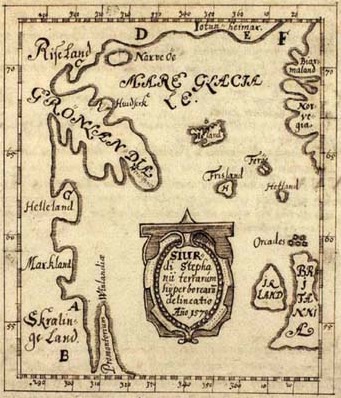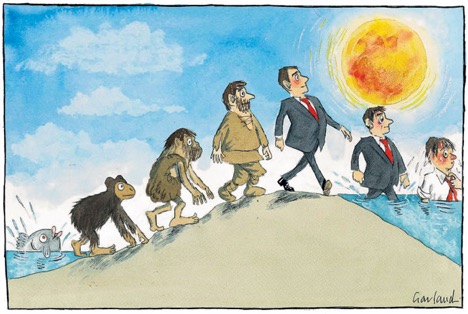Humans: Living on the edge since 200,000 BC
By Hannah Bassett
While I and my fellow ocean-lovers might fancy ourselves ‘sea people’ or possibly ‘mermen and merwomen’ – on account of our penchants for surfing, scuba diving, sailing, or the like – humans are a terrestrial species. Right?
While that is a fact that few would argue against, that is exactly what I intend to do here.
Today, almost half of the world’s population lives in coastal areas[i] and urbanization is pushing even more people coastward.[ii] As millions of people flock to coastal cities and towns, it becomes evermore important to question the common, but misguided association of humans with land and disassociation with oceans and seas. Although the concept of humans as terrestrial beings persists, humans have actually been dependent on the sea for as long as our species has existed and many societies are closely tied to, or even intertwined with, oceans still today.
The present one of the most extreme examples of a marine human population today, to the extent that certain populations have been called ‘sea nomads’. These Sama-Bajau groups spend the large majority of their lives at sea – living on boats which they perpetually take towards food and away from trouble. At times they do live in stationary structures, but even these are houses built on stilts over shallow waters, sometimes many kilometers from the coast. Adults wade from house to house or take boats, while children swim in their aquatic yards.

Trips to land are made on occasion, to trade for rice or fuel to supplement their lives at sea, much like a ‘land-lubber’ might occasionally visit the ocean to catch a fish or a lobster. But some Sama-Bajau prefer not to go ashore at all, citing ‘land-sickness’, a common ailment of these seafarers. Many Sama-Bajau spend enough time in the water, from an early age, that their eyes adapt to make their vision clearer under water than it is above.
The Sama-Bajau people are clearly not ‘of the land’, but a maritime people ‘of the sea’.
Even if most people can’t claim to be ‘of the sea’, are humans really as land-locked as our terracentric, or land-focused, culture would have us believe? Did we evolve from marine animals and head directly to the center of grassy plains or deep into dense jungles?
John R. Gillis, professor of history emeritus at Rutgers University would say no. In his book, The Human Shore, Professor Gillis lays out a convincing and well-supported argument that humans are not land animals nor are we aquatic animals, but humans are in fact ‘edge species’. Humans, he says, “have thrived at the edge of land and sea since the beginning of our species”.[iii]
In The Human Shore, Professor Gillis traces the human-sea relationship back 200,000 years to the time when the shore was the original home of homo sapiens. Coastal living not only happened back then, but was critical to evolution of the human species, Gillis says. Amazingly, the fatty acids found in shellfish are thought to have been essential for development of the large human brain seen in both humans and marine mammals!
As human civilizations developed, water was crucial for transportation and provided opportunity for trade and exchange that was not possible via land. The resulting reliance on water-based travel led to the development of thalassocracies, or regions united by bodies of water where coastal societies separated by a large body of water were more similar to each other than they were to their inland neighbors, despite possibly being closer as the crow flies. Tellingly, maps of these maritime civilizations often centered on the uniting sea, relegating land to the margins.

Similarly, long before inland societies developed their use of agriculture and became sedentary, fisherfolk in coastal societies supplemented their diets by cultivating gardens and farms on land. The fisher-farmer was quite common and the two occupations were not separated until much later. Early hurecognized that residing on coasts allowed for numerous sources of food, transportation and protection. Life on the shores was necessary for human development and marks the pivotal transition where humans combined gardening with game-keeping and the first non hunter-gatherer societies began.
If marine ecosystems were, in fact, so crucial to the origins and growth of human societies, why are they so commonly denied in present days?
Gillis posits that as land transportation improved and humans became more terracentric, popular culture, and religion in particular, promoted the idea of the historic land-lubber and denied our aquatic roots. For example, in the Old Testament water is depicted as wild, unruly and dangerous. Water appears as a punishment or challenge in the form of floods or an impediment to travel; it is an obstacle that needs to be parted, overcome, or bypassed. Eden, the opposite of punishment, the ultimate place of peace and prosperity, is a garden. Landlocked and human-made, devoid of both wildness and water.
Despite these depictions being in direct contrast to the role each element played prior to biblical times, the imagery and concepts have become embedded in human culture.

Today, goods are transported around the world via massive container ships and fish from tropical waters, feed people in temperate regions. Oceans and their coasts provide work, recreation, food and well-being. For many communities, the ocean defines peoples’ way of life, plays a central role in their culture and is integral to their daily activities. While the human-ocean connection is abundantly clear in some cases, like that of the Sama-Bajau, every human alive today relies on oceans and seas, both near and far, all over the world.
As we face a mass movement of people towards the coast, it may be time to re-assess our relationship to the oceans. What do oceans and coasts do for society? What do they do for you? And ultimately, to what extent are we humans still ‘edge species’?
These are some of the questions that we aim to address in ‘Currents’, through creative and well-informed discourse on a range of topics related to society and the environment, with a particular focus on marine systems. Stay tuned for discussions of the many ways in which people and the oceans connect and intertwine – from how seafood makes it to our plates to the ways that humans act as stewards of oceans, coasts and natural resources. We look forward to having you join us as we explore current marine and environmental issues and share our insights as, together, we navigate society and sea!
[i] Berkes, F. (2016). Coasts for people: Interdisciplinary Approaches to Coastal and Marine Resource Management. New York, NY: Routledge.
[ii] McGranahan, G., Balk, D., & Anderson, B. (2007). The rising tide: assessing the risks of climate change and human settlements in low elevation coastal zones. Environment and urbanization, 19(1), 17-37.
[iii] Gillis, J. R. (2012). The human shore: Seacoasts in history. Chicago, IL: University of Chicago Press.